Baby of 'world's deadliest bird' born in UK
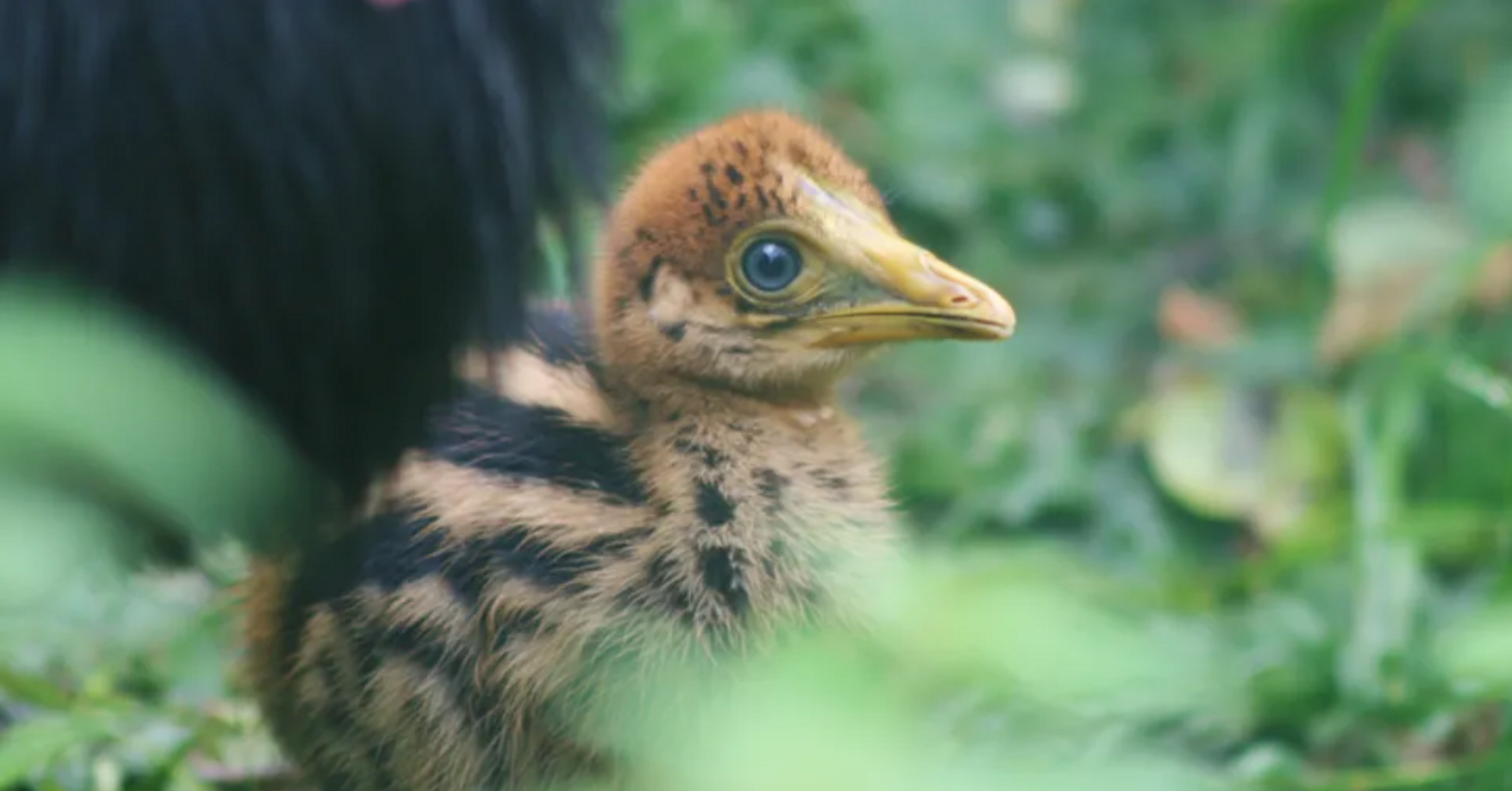
- Published
A cassowary chick, known as one of the world's largest and deadliest birds, has been born at a wildlife park in the Cotswolds.
The chick's parents have been at the Birdland Park since 2012 and are part of the European Endangered Species Programme.
The last cassowary chick born in the UK was in 2021, and before then hatching of the chicks was rare.
Their conservation is tricky as they have specific environmental and behavioural needs.
More like this
Guide: What are endangered species?
- Published9 June 2022
Big angry bird with a scary toe was a pet for ancient humans
- Published29 September 2021
Do birds have travel buddies?
- Published10 September 2024
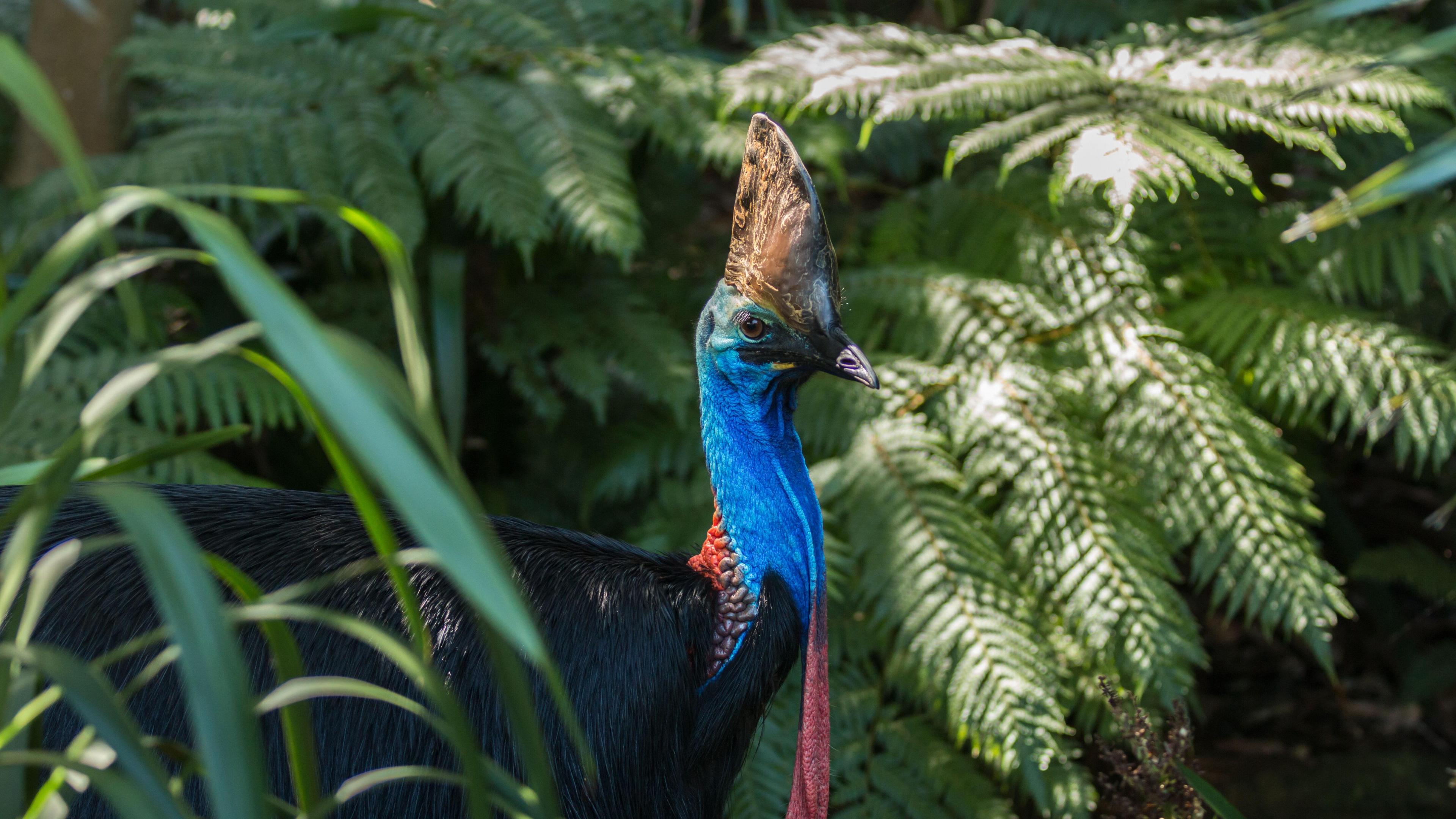
The cassowary, which is related to the emu and native to tropical forests of northern Australia and New Guinea is recognised by its powerful legs and sharp claws - and it can be aggressive when threatened!
It's the male parent that incubates the eggs for up to two months and looks after the hatchlings, leading them to feeding grounds and protecting them for up to 16 months, which is rare in the animal world.
“It has been a massive effort from the entire team here over many years, but it’s all been worthwhile when you see this amazing humbug-coloured chick exploring its new surroundings under the watchful eye of a very protective father,” said Keeper Alistair Keen.
Facts about the cassowary
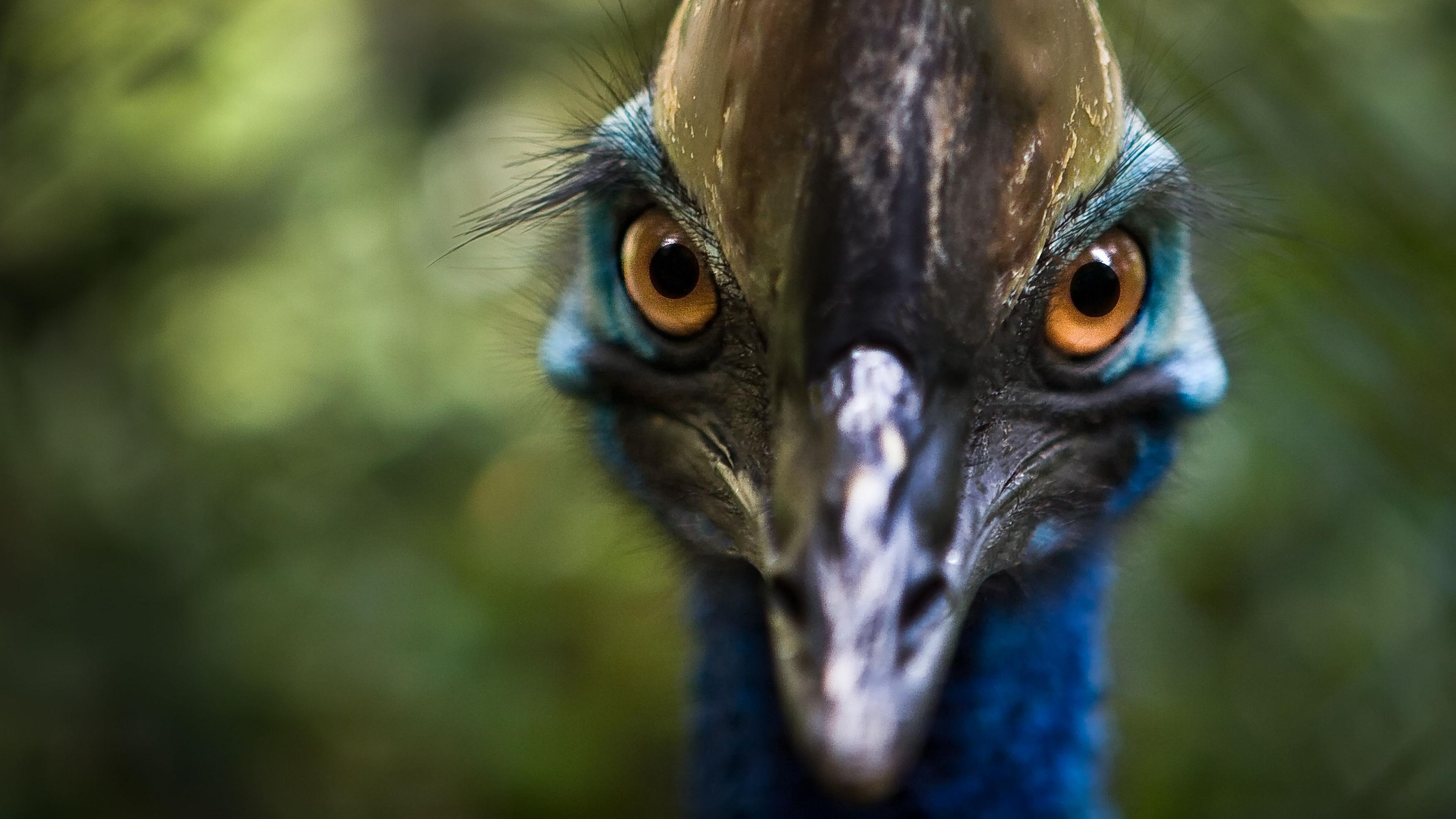
The name ‘cassowary’ is thought to originate from two Papuan words: ‘kasu’ (meaning horned) and ‘wari’ (meaning head). It refers to the bird’s prehistoric looking casque, a hollow structure made of keratin on the top of their head.
Although flightless, they are powerful runners reaching speeds of up to 31 mph (50 km/h).
They can't fly but can jump up to two metres and have even been filmed swimming.
Cassowaries are generally jet black as adults, and their vibrant skin colours on their face and neck vary according to species and location. Female cassowaries are larger than the males and are even more brightly coloured.
They are in many ways a modern-day dinosaur, with claws longer than a velociraptor's.
- Published14 February 2024
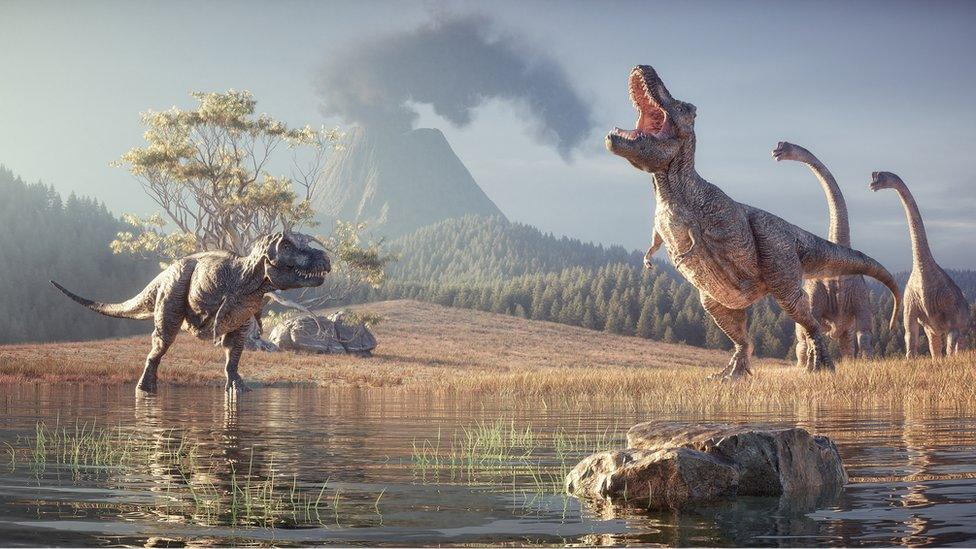
- Published27 March 2021
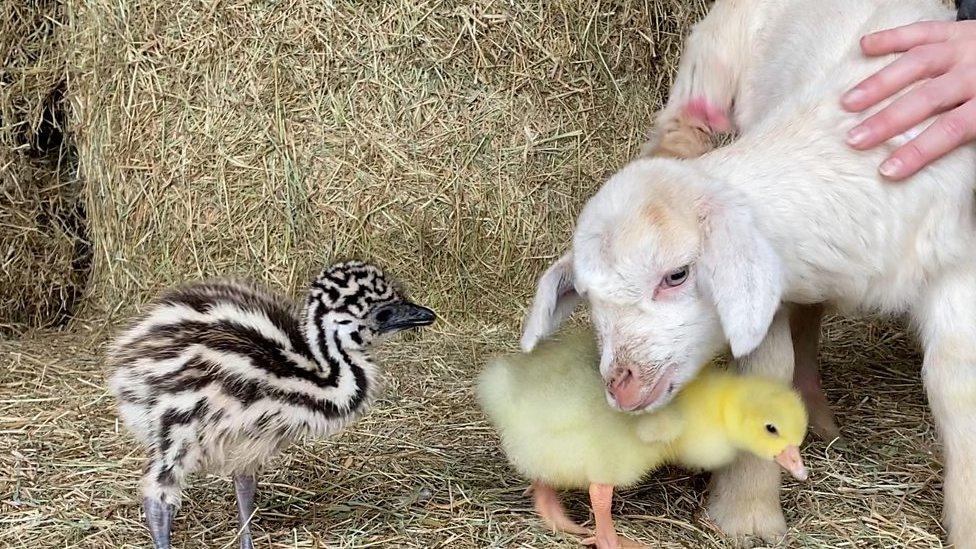
- Published11 January 2012
